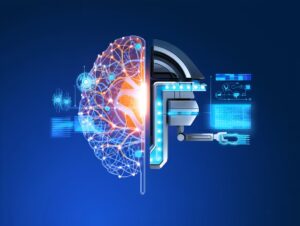The Labyrinthine Complexity of Modern Supply Chains
The contemporary supply chain stands as a testament to global interconnectivity, a vast and intricate web of processes, partners, and geographies. Yet, within this operational tapestry lies a labyrinthine complexity, a structure inherently susceptible to disruption. Managing this sprawling network, even under stable conditions, requires navigating myriad dependencies and coordinating a global ballet of resources.
Navigating Volatility and Uncertainty
We exist in an epoch defined by perpetual flux. Geopolitical shifts, climatic vicissitudes, abrupt market swings, and unexpected resource constraints are not outliers; they constitute the prevailing operating climate. This relentless volatility renders traditional, static supply chain methodologies increasingly inadequate. Agile and prescient navigation is no longer a competitive advantage; it is an existential necessity.
The AI Imperative
For a considerable period, artificial intelligence, predominantly through its discriminative capabilities, has offered crucial tools for mitigating this complexity. Predictive analytics for demand forecasting, algorithmic route optimization, and automated anomaly detection have yielded tangible operational enhancements. However, the sheer velocity and unpredictability of modern disruptions demand an evolution in our technological armamentarium.
Enter Generative AI: A Paradigm Shift
Generative AI, distinguished by its capacity to synthesize novel data, simulate intricate scenarios, and create entirely new content and insights, represents a fundamental paradigm shift in technological capability. It transcends simple prediction, venturing into the domain of creation and intelligent design. This offers transformative potential for supply chains striving not just for efficiency, but for profound resilience and adaptive optimization in the face of the unknown.
Deconstructing Generative AI for Supply Chain Contexts
Beyond Predictive: The Power of Creation
Where predictive AI forecasts probable outcomes based on historical patterns, generative AI possesses the faculty to create. It can synthesize hypothetical scenarios, design optimal solutions, and generate data that never existed, filling gaps and exploring possibilities. This creative power is revolutionary, allowing supply chain practitioners to move beyond merely anticipating potential challenges to actively designing and simulating proactive responses.
Core Generative Models Applicable to Logistics
Several key generative model architectures hold specific relevance for logistics and supply chain operations. Large Language Models (LLMs) are invaluable for processing unstructured data, synthesizing complex reports, and automating communication. Generative Adversarial Networks (GANs) or Variational Autoencoders (VAEs) can excel at creating synthetic datasets for training, simulating the behavior of complex systems, or generating optimized layouts and structures based on learned patterns. Understanding these models illuminates the spectrum of possibilities.
Addressing Supply Chain’s Gordian Knots with GenAI
From Reactive to Proactive Operations
For too long, supply chain management has been largely a reactive discipline, responding to disruptions post-factum. Generative AI empowers a decisive pivot towards a proactive posture. By enabling sophisticated simulations of potential crises and generating detailed, actionable response strategies before they occur, organizations can embed resilience deeply within their operational DNA.
Amplifying Human Expertise
Crucially, Generative AI serves not as a replacement for human intellect, but as a formidable enhancer. It shoulders the computationally intensive burden of exploring vast solution spaces, synthesizing disparate data, and generating complex simulations. This liberation allows human professionals to dedicate their cognitive resources to higher-level strategic thinking, nuanced problem-solving, and the application of invaluable tacit knowledge. GenAI acts as an indispensable co-pilot, elevating human capabilities.
Key Vector Points for GenAI Integration
Augmenting Demand Signal Orchestration
The efficacy of a supply chain hinges significantly on accurate demand forecasting. Yet, external factors constantly inject noise and uncertainty. Generative AI offers powerful tools to refine this critical process.
- Simulating Market Dynamics and Black Swan Events: Beyond extrapolating from past sales, generative models can simulate plausible demand under novel, even extreme, conditions. Imagine simulating the impact of a sudden regulatory change, a major competitor’s market exit, or an unforeseen global event on consumer demand patterns, allowing for rigorous stress-testing of current plans.
- Generating Synthetic Data for Edge Cases: Real-world historical data often lacks sufficient examples of rare occurrences or entirely new product categories. GenAI can synthesize realistic, high-fidelity data representing these critical edge cases, providing robust training material for demand forecasting models and improving their performance in genuinely novel situations.
Revolutionizing Inventory Modalities
Achieving optimal inventory levels presents a perennial challenge – balancing the costs of excess stock against the risks of debilitating shortages. GenAI brings dynamic sophistication to this task.
- Dynamic Stock Level Generation Based on Real-time Flux: Moving beyond static calculations, GenAI can continuously analyze live streams of data – point-of-sale information, supply chain telemetry, even broader economic indicators – to generate dynamically adjusted, optimal stock level recommendations. This allows inventory to flex and adapt in near real-time based on the unfolding operational landscape.
- Optimizing Safety Stock via Probabilistic Modeling: Determining appropriate safety stock has traditionally relied on historical variability. GenAI can model and simulate the probabilistic distribution of lead times, demand fluctuations, and potential disruptions under diverse, hypothetical future conditions, generating recommendations for safety stock that are both cost-efficient and significantly more resilient to unforeseen events.
Elevating Logistics and Kinetic Flow
The physical movement of goods remains a cornerstone of supply chain activity, often representing a significant cost center and potential point of failure. GenAI can optimize this kinetic flow.
- Generating Optimal Routing Scenarios Under Constraints: Traditional routing algorithms can be challenged by rapidly changing or complex constraints – sudden road closures, unexpected vehicle capacity limitations, or urgent delivery requirements. GenAI can quickly generate and evaluate a myriad of routing alternatives, factoring in real-time conditions and predicted impacts, proposing the most efficient and resilient paths under dynamic pressures.
- Predictive Maintenance Schedules for Fleet Assets: By analyzing granular data from vehicle sensors, historical maintenance records, and even operational environmental factors, GenAI can simulate potential equipment degradation and generate highly optimized, predictive maintenance schedules. This proactive approach minimizes unexpected breakdowns, reduces costly downtime, and ensures fleet reliability.
Fortifying Supply Chain Resilience & Risk Posture
Building a supply chain capable of withstanding and quickly recovering from shocks is paramount in today’s volatile world. GenAI is a potent tool for enhancing this resilience.
- Simulating Disruption Cascades: A localized disruption can have unforeseen and cascading effects across an entire network. GenAI can simulate the potential ripple effects of various types of disruptions – from a port strike to a cyberattack or a natural disaster – across the entire supply chain graph, pinpointing critical vulnerabilities and dependencies with unprecedented clarity.
- Generating Mitigation Playbooks: Based on the insights gleaned from disruption simulations, GenAI can synthesize comprehensive, actionable mitigation playbooks. These provide step-by-step guidance for human teams when a specific crisis unfolds, accelerating response times, standardizing procedures, and minimizing the overall impact of disruptive events.
Enhancing Supplier Ecosystem Harmonization
Managing a dispersed and diverse network of suppliers involves complex interactions and critical information exchange. GenAI can streamline and enhance this ecosystem.
- Automated Contract Clause Generation and Analysis: Large Language Models can significantly expedite the drafting and analysis of complex supplier contracts. They can help ensure consistency, identify potential areas of risk by comparing against best practices or previous agreements, and even suggest alternative clauses based on specified parameters, freeing legal and procurement teams for higher-value tasks.
- Optimizing Communication Flows and Information Synthesis: GenAI can process vast volumes of unstructured communication data – emails, messages, meeting transcripts – to synthesize key information, flag urgent issues requiring attention, draft initial responses, and optimize the overall flow of critical information between the organization and its supplier base, fostering greater transparency and collaboration.
Crafting Superior Customer Experiences
Ultimately, the performance of the supply chain culminates in the customer’s experience. GenAI can proactively shape and enhance this crucial interaction.
- Generating Proactive Status Updates and Anomaly Alerts: Moving beyond reactive customer service, GenAI can analyze upstream supply chain data to predict potential delivery delays or issues. It can then proactively generate personalized status updates and send automated anomaly alerts to customers, managing expectations, building trust, and significantly reducing the volume of inbound customer inquiries.
- Personalized Communication Across Touchpoints: GenAI-powered conversational agents can provide instant, personalized support to customers, handling routine inquiries efficiently. Furthermore, LLMs can tailor communication style and content across various touchpoints, ensuring a consistent, positive, and personalized brand interaction throughout the order fulfillment and delivery process.
Reimagining Network Topology & Design
The strategic configuration of warehouses, factories, distribution centers, and transportation lanes is a foundational element of supply chain efficiency and resilience. GenAI offers powerful capabilities for optimizing this complex design challenge.
- Simulating Various Configuration Outcomes: GenAI can simulate the performance of countless hypothetical network configurations under a wide array of conditions – varying demand patterns, cost structures, potential disruption scenarios – allowing designers to evaluate the trade-offs and predict the long-term impact of different layouts before committing resources.
- Identifying Optimal Node Placements: Building upon network simulations, GenAI can generate recommendations for optimal locations for new facilities or adjustments to existing ones. It considers myriad factors – proximity to customers and suppliers, labor pool availability, transportation infrastructure – to pinpoint strategic locations that maximize efficiency and resilience.
Streamlining Documentation and Compliance Obrano
The administrative burden associated with generating necessary documentation and ensuring adherence to complex regulations is significant. GenAI can alleviate this “obrana” or burden.
- Automated Report and Manifest Generation: GenAI can automate the creation of routine operational reports, shipping manifests, customs declarations, and other essential documents by pulling and synthesizing data from transactional systems. This dramatically reduces manual effort, accelerates processes, and minimizes the potential for human error in critical paperwork.
- Ensuring Regulatory Adherence Synthesis: By analyzing complex regulatory texts and comparing them against operational data, GenAI can synthesize insights to ensure compliance. It can flag potential deviations proactively and even generate the specific documentation or reports required to demonstrate regulatory adherence, reducing compliance risk.
Navigating the Implementation Terrain
Successfully deploying Generative AI in a supply chain context requires careful consideration and strategic planning.
Curating the Data Substrate
Generative models are fundamentally data-driven. Their efficacy is directly tied to the quality, quantity, and relevance of the data upon which they are trained and operated. Establishing a robust data governance framework and ensuring access to clean, comprehensive, and well-managed data streams from across the entire supply chain ecosystem is a critical foundational step.
Architecting Seamless Integration Fabric
Generative AI tools must integrate harmoniously with existing enterprise systems – ERPs, WMS, TMS, and other operational platforms. Building a flexible and resilient integration layer, or “fabric,” is essential to ensure data flows freely and insights from AI can be actioned effectively within the operational workflow.
Grappling with Ethical Quandaries and Bias Mitigation
Like all AI systems, generative models can inadvertently reflect and even amplify biases present in their training data. This can lead to suboptimal or unfair outcomes in areas like resource allocation or risk assessment. Implementing rigorous testing, continuous monitoring, and proactive bias mitigation strategies is paramount to ensuring ethical and trustworthy AI deployments that serve all stakeholders equitably.
Cultivating the Requisite Talent Nexus
Implementing, managing, and deriving maximum value from Generative AI requires a confluence of specialized skills. This includes data science expertise, AI ethics understanding, deep domain knowledge in supply chain operations, and change management capabilities to guide organizational adoption. Organizations must strategically invest in upskilling existing personnel and attracting new talent to form the necessary internal “talent nexus.”
Selecting the Optimal Generative Toolkits
The landscape of Generative AI models and platforms is evolving at a rapid pace. Organizations must undertake a meticulous evaluation process, selecting the tools and models best suited to their specific supply chain challenges, data characteristics, and existing technological infrastructure. A phased deployment approach, starting with targeted pilot projects, can be invaluable in validating the suitability and efficacy of chosen toolkits before broader rollout.
Pioneering the Future Supply Chain
Toward Autonomous and Self-Optimizing Networks
The trajectory of Generative AI in supply chain management points towards increasingly autonomous operations. As AI systems become adept at not only simulating complex scenarios but also generating optimal responses and executing decisions with minimal human oversight, supply chains can evolve into highly adaptive, self-healing networks capable of navigating unforeseen challenges with unprecedented speed and efficacy.
The Symbiotic Relationship of AI and Human Acumen
This future state is not one devoid of human involvement. Instead, it is characterized by a profound symbiosis. AI handles the heavy lifting of data processing, simulation, and option generation, freeing human professionals to focus on strategic oversight, ethical considerations, complex problem-solving that requires intuition and experience, and making final decisions on critical strategic initiatives. It is a partnership that leverages the best of both capabilities.
Conclusion
Embracing the Generative Renaissance
The capabilities unlocked by Generative AI represent a true renaissance for supply chain management. It offers the tools not just to predict and react, but to create, simulate, and proactively shape the future state of operations. This moves supply chains beyond incremental improvements towards a realm of transformative potential, enabling levels of resilience, agility, and optimization previously unattainable.
Charting a Course for Transcendent Supply Chain Performance
Harnessing this potent technology demands strategic foresight, investment in data infrastructure, careful integration into existing workflows, and a dedicated effort to cultivate the necessary human expertise. For forward-thinking organizations willing to embrace this generative evolution, the path is clear: leverage AI to chart a course toward transcendent supply chain performance, ensuring robustness, efficiency, and value creation in an increasingly unpredictable global environment.
Frequently Asked Questions: Harnessing Generative AI for Next-Gen Supply Chain Solutions
Q1: What is Generative AI, and how does it differ from traditional AI used in supply chains?
A1: Generative AI is a type of artificial intelligence capable of creating novel data, content, or simulations, rather than merely predicting outcomes based on historical data (which is typical of traditional, or discriminative, AI). In supply chains, this means GenAI can simulate complex future scenarios, generate synthetic data for rare events, or design optimized processes, moving beyond simple forecasting to active creation and exploration of possibilities.
Q2: What are the primary benefits of integrating Generative AI into supply chain operations?
A2: The main benefits include a shift from reactive to proactive operations, enhanced resilience against disruptions through simulation and mitigation playbook generation, improved decision-making through scenario analysis, optimization of complex processes like inventory and logistics, and amplification of human expertise by handling computationally intensive tasks.
Q3: How can Generative AI improve demand forecasting and inventory management?
A3: GenAI augments demand forecasting by simulating market dynamics under various hypothetical conditions, including “black swan” events, and generating synthetic data for training models on rare cases. For inventory, it enables dynamic stock level generation based on real-time data flux and optimizes safety stock levels through sophisticated probabilistic modeling under simulated uncertainties.
Q4: What specific applications does Generative AI have for logistics and transportation?
A4: In logistics, GenAI can generate optimal routing scenarios that dynamically adjust to real-time constraints like traffic or unexpected delays. It also contributes to elevating kinetic flow by enabling predictive maintenance schedules for fleet assets based on detailed simulations of potential failures.
Q5: How does Generative AI contribute to supply chain resilience and risk management?
A5: GenAI significantly fortifies resilience by simulating the cascading impact of potential disruptions across the network, identifying vulnerabilities. Crucially, it can then generate detailed mitigation playbooks tailored to specific crisis scenarios, enabling faster and more effective responses.
Q6: Can Generative AI assist with managing supplier relationships and enhancing customer experience?
A6: Yes. For suppliers, LLMs can aid in automated contract analysis and generation, and optimize communication flows by synthesizing information. For customers, GenAI can craft superior experiences through proactive generation of status updates and anomaly alerts, and by enabling personalized communication across various touchpoints.
Q7: Is Generative AI useful for strategic supply chain network design?
A7: Absolutely. GenAI can reimagine network topology and design by simulating the performance outcomes of countless different configurations (warehouse locations, distribution routes) under various conditions, helping identify the optimal placement of nodes for efficiency and resilience.
Q8: What are the main challenges in implementing Generative AI within a supply chain context?
A8: Key challenges include curating a high-quality data substrate for model training, architecting a seamless integration fabric with existing legacy systems, grappling with ethical quandaries such as bias mitigation, cultivating the requisite talent nexus with specialized AI and domain expertise, and selecting the optimal generative toolkits from a rapidly evolving landscape.
Q9: Will implementing Generative AI lead to the complete automation of supply chain jobs?
A9: The article posits a symbiotic relationship between AI and human acumen. GenAI excels at data synthesis, simulation, and option generation. This amplifies human expertise, freeing professionals to focus on strategic oversight, nuanced decision-making, ethical judgment, and complex problem-solving that still requires human intuition and experience.
Q10: What does the future hold for Generative AI in supply chains?
A10: The future trajectory points toward increasingly autonomous and self-optimizing supply chain networks. GenAI’s ability to generate and potentially execute actions based on complex simulations suggests a future where supply chains are more adaptive and resilient, operating through a sophisticated partnership between advanced AI systems and human professionals providing strategic guidance.
Further Reading
For those interested in diving deeper into generative technology, several excellent resources are available:
- AI creativity tools: Explore platforms like RunwayML, Artbreeder, and OpenAI’s DALL·E to see practical applications of generative tech in creative industries.
- Research papers: Papers such as “Generative Adversarial Networks” by Ian Goodfellow and “Attention is All You Need” on transformer models provide foundational knowledge on the future of AI creativity.
- Books: Titles like The Creativity Code by Marcus du Sautoy and Artificial Intelligence: A Guide for Thinking Humans by Melanie Mitchell offer insights into AI’s role in art and machine learning.
- Case studies: Investigate real-world success stories, such as OpenAI’s GPT models in automated content creation or DeepMind’s AlphaFold in healthcare innovation.
These resources offer a strong starting point for anyone looking to further explore the evolving world of generative technology.
If you’re ready to take your business to the next level with AI-driven demand forecasting or any other advanced technology solutions, contact RTS Labs today for a free consultation. Our experts are here to help you leverage the power of AI to boost your business success.






